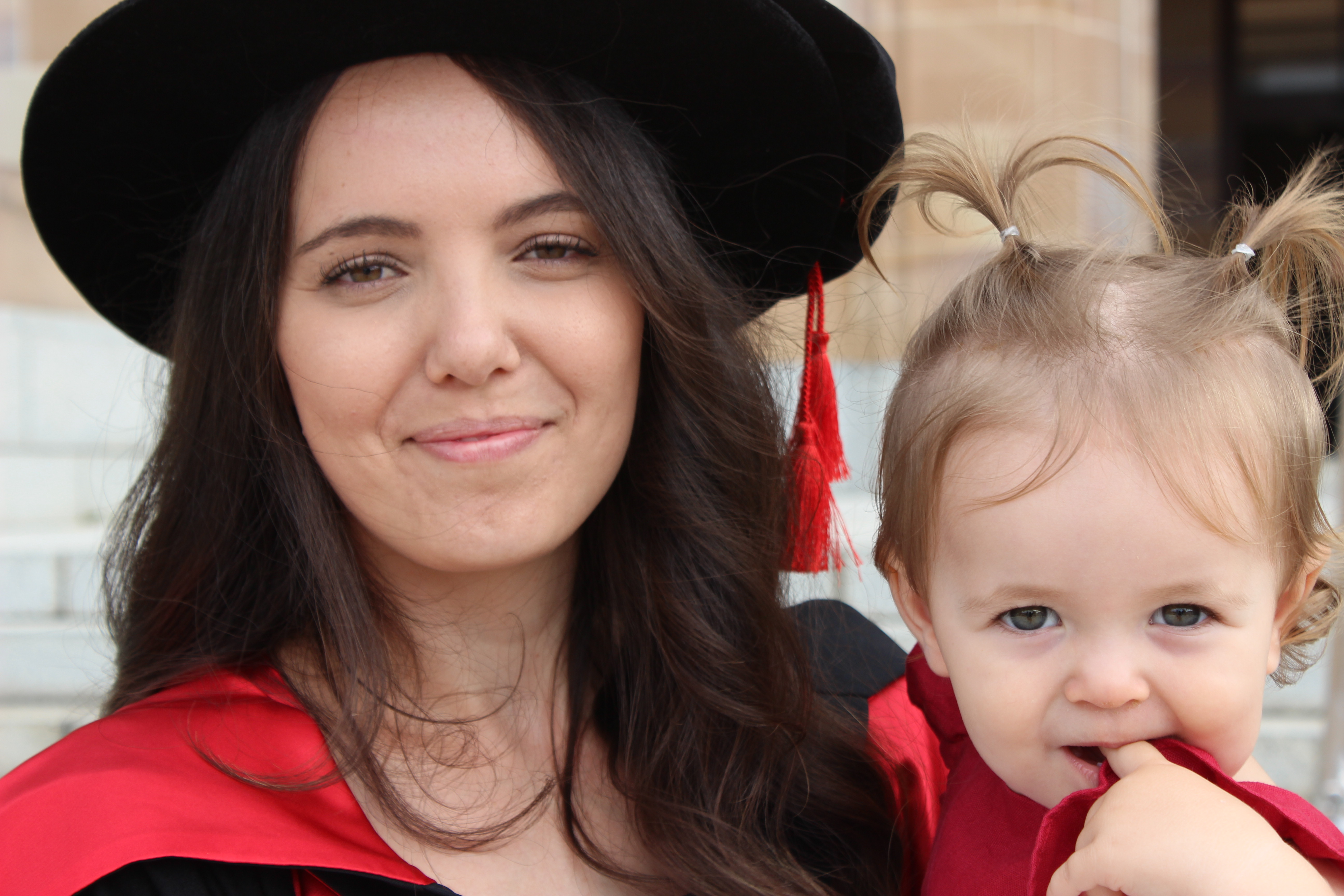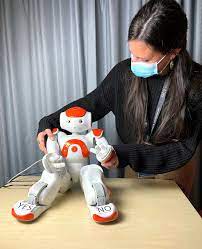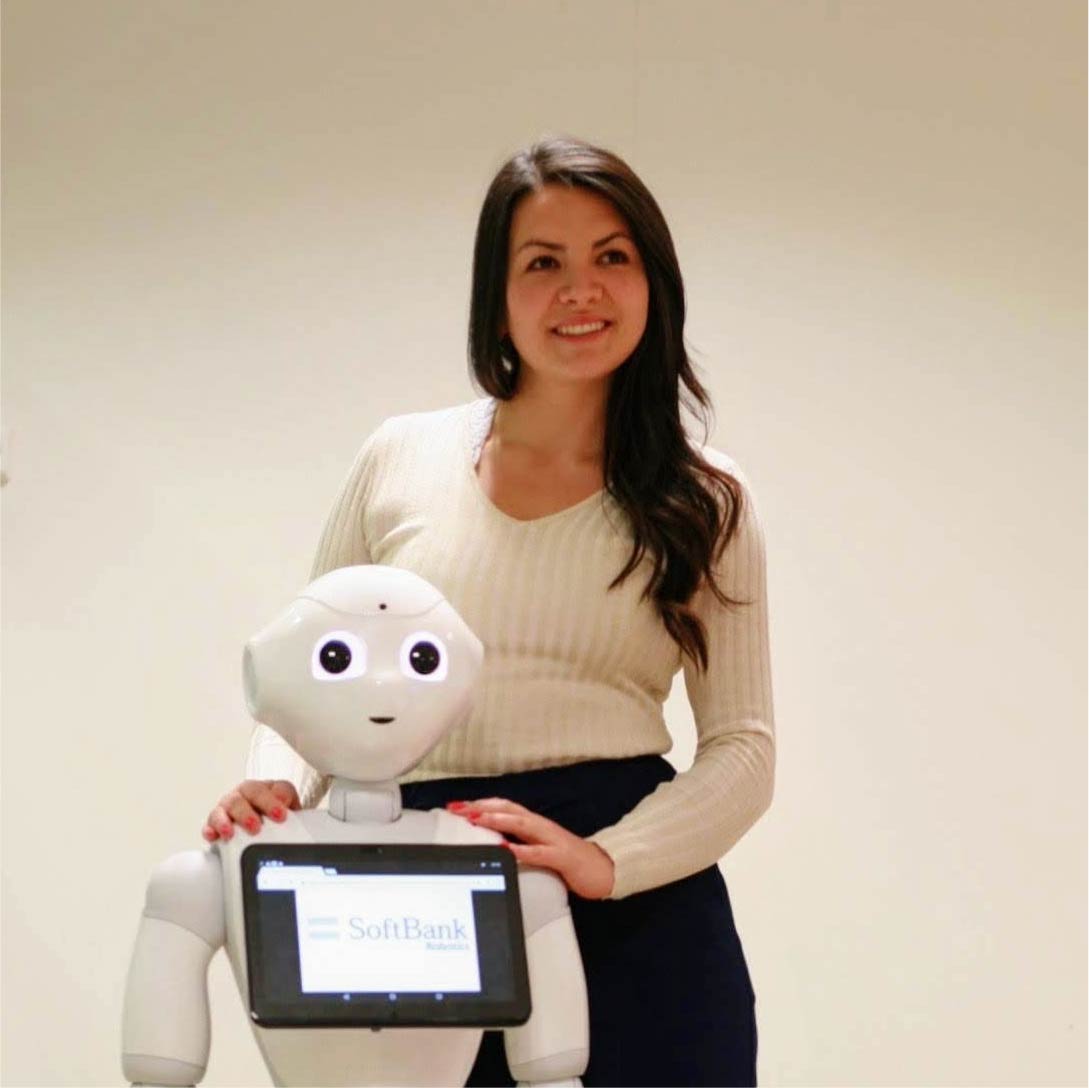The field of child-robot-interaction (CRI) is a fast growing subfield of human-robot-interaction (HRI), with a multitude of potential contexts and applications. Designing and conducting successful CRI studies often requires input from several different areas, necessitating interdisciplinary collaborations. Understanding how to transcend disciplinary boundaries is therefore a core skillset required of child robot interaction researchers. However, establishing such collaborations is not always straightforward, and can lead to difficulties with consolidating definitions, measurement techniques, and experimental design.
The goal of this workshop is therefore to bring together researchers from different subfields of CRI (e.g., engineering, computer science, psychology, communication science, linguistics, interaction design and media) and application domains (e.g. education, (mental) healthcare) to be able to share insights and advice regarding the design, implementation, and analysis of CRI studies.
Important dates
- February 13, 2023 Submission deadline
- February 27, 2023 Acceptance notification
- March 6, 2023 Publication abstracts
- March 13, 2023 Workshop

Outcomes
The workshop will open with a panel discussion involving researchers from different disciplines with CRI. We have four confirmed panelists, including Dr Kristyn Sommer from Griffith University, Australia; Dr Emilia Barakova from Eindhoven University of Technology, Netherlands; Dr Barbara Bruno from École Polytechnique Fédérale de Lausanne, Switzerland and Dr Denise Geiskkovitch from McMaster University, Ontario, Canada. Between them, their research expertise spans developmental psychology, interaction design, robotics and control, and computer science. The panel discussion will be followed by 3-minute flash talks of the accepted paper abstracts. These flash talks are intended as a starting point for later discussions during the workshop. The second half of the workshop will be dedicated to breakout discussion groups. The breakout groups will divided into two parts; in the first half, participants will discuss challenges they have experienced, or are concerned about, when conducting CRI studies. In the second half, groups will discuss potential solutions to these challenges. The workshop will conclude with all participants coming together and each group presenting a short list of identified challenges and proposed solutions. The discussions need not be tailored to specifically experimental user studies, and can also include theoretical and ethical reflections on the field of CRI as a whole. We hope that some of the ideas fostered in this workshop will encourage both current and future CRI researchers to think critically about the design, measurement, and ethical implications of child-robot-interaction, and work together towards developing and sharing resources which can benefit the community as a whole.
Want to know more about the outcomes of this workshop? Visit the dedicated Outcomes page.
Participation
Program
Submission
Please read below what you need to know before you submit your abstract.
Topics
Potential topics for submission include, but are not limited to:
- Quantitative and/or qualitative research methodology to assess child-robot interactions;
- Theoretical reflections on the conceptualization and/or operationalization of constructs relevant to CRI;
- Ethical reflections on settings and methods in/by which to assess child-robot interactions;
- Design and technical implementation (Wizard of Oz, autonomous, or semi-autonomous) of robot systems and CRI scenarios;
- And creation of appropriate and effective interaction content and social robot behaviors.
Format
Participants will be invited to submit a 250 word abstract focusing on the central topic of interdisciplinary research in CRI. All submissions should include a reflection on key challenges in conducting CRI research (either from an empirical or theoretical/ethical viewpoint). Study proposals which fit the theme of the workshop will also be considered. Submissions will be accepted based on the originality, clarity, and relevance of their contribution. At least one author must register and attend the workshop, if accepted. Please submit your abstract via this form (https://forms.gle/mFvX9CdD57UjU12w6). Accepted submissions will be published in advance on the workshop website, which participants will be asked to read and prepare questions / discussion points for the breakout sessions.
During workshop
This half-day workshop aims to bring together CRI researchers and stakeholders across disciplines to discuss qualitative and quantitative methods that can be used to capture concepts relevant to the process of child-robot relationship formation. In addition, key issues in the field will be identified and discussed from an interdisciplinary perspective, and potential solutions will be brainstormed.
Accepted Abstracts
- Goren Gordon: Social robots in CRI for education are used today not only for curricular learning, but also for promoting 21st century skills, such as curiosity, creativity and growth mindset. One of the most important soft skills is that of collaboration. In educational scenarios, children learn best when they learn together, in a social environment. However, children do not yet master this important skill, especially in younger ages. One may be prone to think that a child interacting, learning and collaborating with a social robot learns collaboration skills, but collaboration with a social robot is not necessarily the appropriate skill we wish to teach. Another alternative is for a group of children to interact with a social robot. This is a very challenging scenario on many levels, such as perceptual, decision making-wise and pedagogical. Despite of these challenges, the benefits of a social robot facilitator and teacher of small group activities are numerous. For example, the social robot can demonstrate proper social behavior, such as turn-taking; it can promote equal participation by addressing the least-engaged child; it can detect and promote social dynamics within the group. However, many questions remain: How can CRI leverage the “group of children” setup for a better learning environment? How should the robot facilitate and teach “good group dynamics”? What is the role of the embodied social robot in this context?
- Sviatlana Höhn and John McCahill: During the pandemic, parents of school children had to switch between conflicting roles of parenting, teaching their children at home and working from home adding a teacher-pupil component to the child-caregiver relationship. The situation was especially damaging for children with autism: They could not learn in online classes and started losing their skills. Humanoid robots can provide a solution. We analyzed parents’ testimonials from families who used QTrobot at home for almost one year to teach autistic children social, cognitive, and linguistic skills in the pandemic's conditions. We systematized the relationship characteristics used by parents in testimonials as features borrowed from other relationships (peers, parents, teachers, and other objects) and features specific to robots. The qualitative analysis shows that QTrobot helped to separate the scripts of school and home still being at the same place. Taking over the teacher’s role to a large extent, QTrobot was not only useful as a tool for learning, but also as a mediator and modifier of in-family relationships: Parents report improved feeling of connectedness to their children and among their children (autistic and neuro-typical), increased awareness of the progress the kids make, and lower levels of frustration. However, no generalizable mapping from observations to relationship labels seem reasonable because of high variance in the behavior of children.
- Anastasia Akkuzu: Given the subjective nature of trust as a phenomenon and its requirement of unified contributions of many facets for every individual context, the development of a computational model of trust proves to be a difficult endeavour. In this ongoing study, we investigate mutual gaze, head position, and shoulder position as behavioural measures of social trust and related constructs in child-robot interaction (cHRI) such as attention, empathy, and liking/friendship. The related user study was done with 52 children interacting with a FurHat robot in a 2x2 experimental design, where the appearance (human-likeness) and expressions of trusting behaviour (lexical alignment) of the robot are varied. The interaction context is a storytelling game where the children collaborate with the robot to tell a story. The first hypothesis of this study is that the discrepancies in mutual gaze and bodily positioning between experimental conditions will correlate with the self-reported data on interpersonal trust provided in pre- and post-interaction interviews with the children. The second hypothesis of this study is that the discrepancies in behaviour will correlate with the interview data on liking and friendship provided by the children. If the first hypothesis is fulfilled, then we can assume that social trust can be indicated through gaze and postural data. If the second hypothesis is fulfilled, then we can assume that individual facets of social trust can be indicated through this measure.
- Nurziya Oralbayeva: We aim to explore different strategies for teaching and learning the Kazakh language in an engaging multi-party child-robot interaction. To this end, we piloted a within-subject experiment with 21 children aged 8 and 9 to compare the effectiveness of the reciprocal peer tutoring (RPT) paradigm within the multi-party child-robot interaction. The results showed that the children learned more words with the tutor robot, while they reported more positive mood and emotional experiences with the tutee robot. Expanding on this work, we propose an RPT learning scenario, where a child and two humanoid social robots switch roles of a tutor, a tutee and a peer. The Reinforcement-learning-based algorithm will contribute to an adaptive learning system that helps children learn Kazakh as a second language. As children have varying degrees of Kazakh language proficiency, a system will adapt to the child’s level depending on what the child chooses for a given task: either ask the tutor robot for help if he/she cannot complete the task on his/her own or take a role of the robot’s tutor if he/she knows the vocabulary needed to describe the pictures to the tutee robot. Such situated language learning scenarios will facilitate in the development of core language skills like vocabulary knowledge, reading and writing.
- Jonas Irala, Dennis Biström and Leonardo Espinosa-Leal: Child-Robot Interactions (cHRI) requires a set of technical challenges. Several companies offer different devices with several social capabilities that have proven useful for different services in research and industrial contexts. One important element when services are developed is that these fulfil core principles of trustworthiness such as accountability, transparency, privacy, among others. In this work, we present the first conclusions of developing services with a CSJbot Snow, a social robot designed for HRI. Our findings show that open-sourcing the main interaction channels and software of this humanoid robot is the right path for achieving complete trustworthiness. We argue that future research in social robots must embrace the use of fully open-source hardware and software. Moreover, we believe these practices must be translated to other contexts where the use of these services will become common, in both public and private spheres.
- Francesca Cocchella: As research on Child-Robot Interaction is taking hold in robotics we need to implement tools to interpret it. When measuring children's impressions with classical techniques, they will understand our requests accordingly their age. Thus, it becomes challenging to obtain uniformed data. To better comprehend the results, different methods can be combined e.g., graphic representations of the constructs (Severson & Lemm, 2016). We then propose an adapted tool to detect the relationship between kids and robots: the Social Exclusion Bench Tool (SEBT Mazzoni et al., 2021). SEBT consists of the image of a bench on which a target is sitting; the subject is asked to choose where to sit. We implemented it in a social exclusion experiment where 28 participants (8 f, 20 m, age: M=16.5, SD=1.2) from 4 European states (7 It, 8 Fr, 2 Ger, and 9 Por), played a conversational game with the robot iCub. Additionally to the SEBT, we submitted the scale of Enjoyment (i.e., how much they found interaction entertaining, Vega et al., 2019) and an adapted version of Team Identity Scale (TIS i.e., feeling of being in the same social group as iCub Heere & James, 2007). The majority, including the ones that were excluded by iCub, choose to sit next to it. Moreover, SEBT resulted positively correlated with the survey measures (Enjoyment ρ=.40, p=.04 TIS ρ=.50, p=.01). Finally, SEBT could be a helpful tool in addition to self-report scales, to better understand the relationship between robots and children
- Miguel Xochicale: The field of Child-Robot Interaction, cHRI, has made great progress in the last decade, creating new child-centred programs, advancing the educational infrastructure with new code and software and open sourcing new datasets. cHRI faces different challenges in developing countries, including India, South Africa, Mexico, and Brazil. For instance, the project artificial intelligence and robotics for children, air4children, has been combining open-source hardware and software and non-traditional education to teach fundamentals of AI and Robotics in a small town in Mexico since 2014. However, there are various challenges in low-resource countries: (a) the little to none experts in Robotics and AI, (b) the high-cost of educational material (both for software and hardware), (c) the limited child-centred material aligned to the values of their communities, and (d) the qualitative and quantitative evaluation instruments for engagement and collaboration in cHRI activities. Hence, the aim of this abstract is to discuss state-of-the-art challenges and potential solutions of cHRI in low-income countries such as increasing research funding, establishing networks, communities and facilities, fostering international collaborations and creating training programs.
Invited Panelists
We are very happy to announce that during the workshop, we will have a panelist discussion by Dr Kristyn Sommer from Griffith University, Australia; Dr Emilia Barakova from Eindhoven University of Technology, Netherlands; Dr Barbara Bruno from École Polytechnique Fédérale de Lausanne, Switzerland and Dr Denise Geiskkovitch from McMaster University, Ontario, Canada.

Kristyn Sommer
Panelist
GU Postdoctoral Research Fellow, Griffith University
Dr. Kristyn Sommer holds a PhD in developmental psychology from the University of Queensland, Australia. She is currently an awardee of the Griffith University Postdoctoral Research Fellow Award at Griffith University, Australia. Dr. Sommer is an expert in child-robot interaction, specifically focusing on early childhood cognitive, social, and emotional development with social robots. She has worked in interdisciplinary teams throughout her career including teams comprised of roboticists, computer scientists and linguists. In her work on children’s learning from social robots, she identified a “robot deficit” in imitation and word-learning from robots (relative to human models) between 1- and 6-years-of-age. Furthermore, her research identified a relationship between children’s level of social, emotional, and physical engagement with social robots and their learning from social robots. Dr. Sommer is currently exploring how the individual differences in children’s engagement with social robots influencing learning and how we may be able to remediate this challenge for children and social robots. Dr. Sommer is an Associate Editor at the Journal of Experimental Psychology: Applied, is an avid science communicator on child development (reaching between 1 and 5 million eyes a month across social media) and has won national and international awards for science communication.

Emilia Barakova
Panelist
Assistant professor, Eindhoven University of Technology
Emilia Barakova holds a Ph. D. degree from the University of Groningen, The Netherlands, and a master’s degree from the Technical University of Sofia, Bulgaria. She is currently affiliated with the Industrial Design department and is the head of the Eindhoven University of Technology's Social Robotics Lab. She previously worked at the Riken Brain Science Institute in Japan, the German-Japanese Robotics Research Lab in Japan, the University of Groningen, The Netherlands, and the Bulgarian Academy of Sciences. Barakova is an expert in the field of embodied social interaction with and through technology, social, and cognitive robotics. She has specialized in combining methods from cognitive sciences, robotics, and computational intelligence to model social behavior. Her current research focuses on using social robots for children with ASD, social robots for education, and for improving the well-being of persons with dementia and with intellectual disabilities. Barakova has served as program chair of several conferences on Social Robotics and Artificial intelligence and is an Associate Editor of the International Journal of Social Robotics and editor of Personal and Ubiquitous Computing, Interaction studies, and Transactions of Human-Machine Systems.

Denise Geiskkovitch
Panelist
Assistant Professor, McMaster University
Denise Geiskkovitch is an Assistant Professor in the Department of Computing and Software, and the Barber-Gennum Endowed Chair in Information Technology at McMaster University in Canada. Denise’s research takes an interdisciplinary approach, investigating how we can utilize unique and unconventional robot behaviours, such as errors, purposefully to elicit desired or mitigate undesired outcomes in Child-Robot Interaction.

Barbara Bruno
Panelist
Post doc Research Fellow, EPFL
Barbara Bruno is a post-doc researcher at the École Polytechnique Fédérale de Lausanne (EPFL), in Lausanne, Switzerland, deputy head of the CHILI lab, with research interest in Socially Assistive Robotics and Human-Robot Interaction. She is co-founder of the start-up company Teseo, Italy. Barbara received the M.Sc. and the Ph.D. in Robotics from the University of Genoa in 2011 and 2015, respectively. She is part of the Swiss nationwide NCCR Robotics organisation and the Swiss-French research project iReCHeCk. In 2017-2019 she was Technical Manager of the H2020 project CARESSES, and she has been Visiting Scholar at Örebro University (Sweden), with the Italian-Swedish project WEARAMI. She has published more than 50 articles in international journals and peer-reviewed international conferences.
Organizing Committee

Rebecca Stower
KTH Royal Institute of Technology, Sweden
Mike Ligthart
Vrije Universiteit Amsterdam, NL
Micol Spitale
University of Cambridge, UK
Natalia Calvo-Barajas
Uppsala University, SE